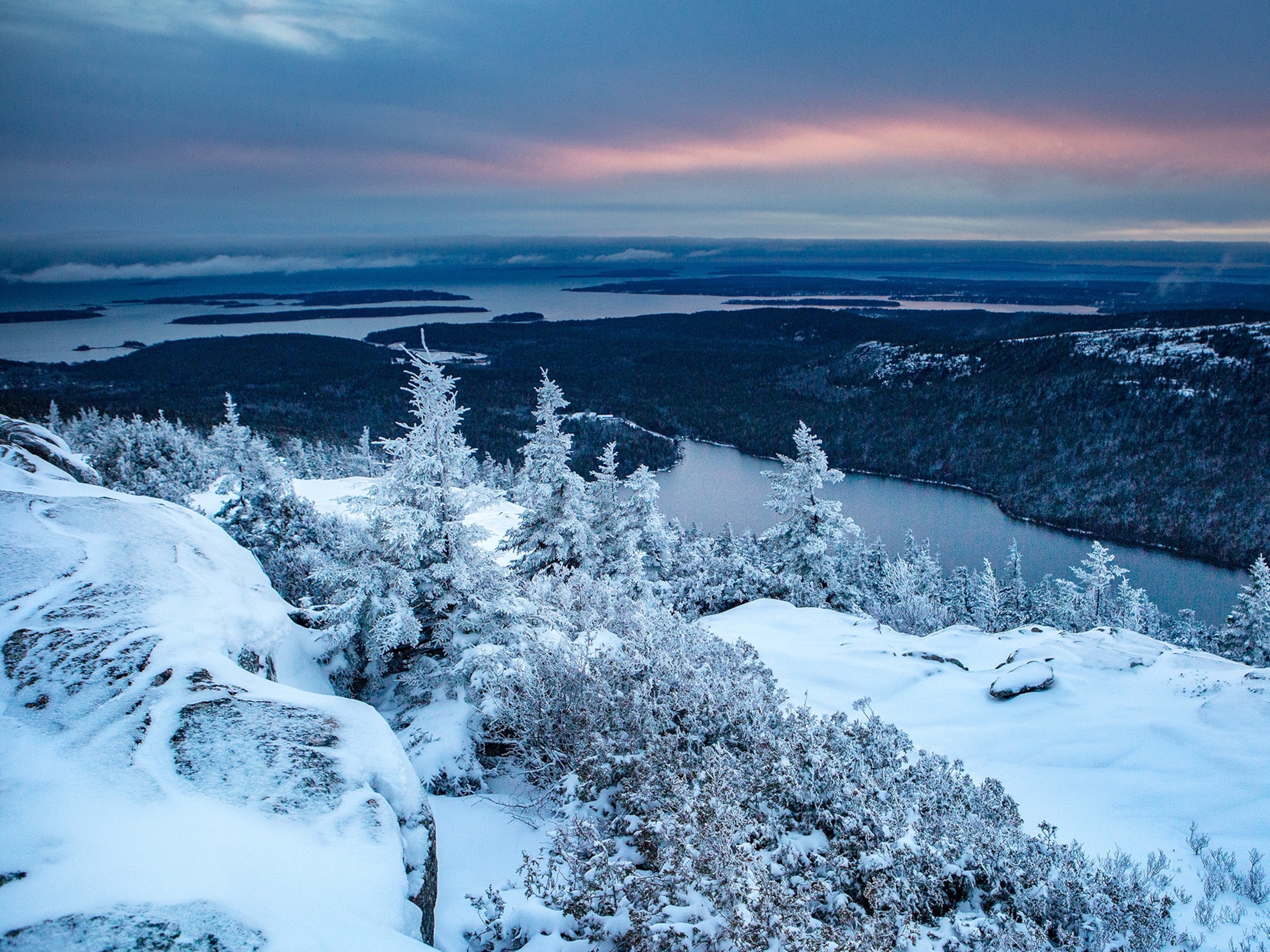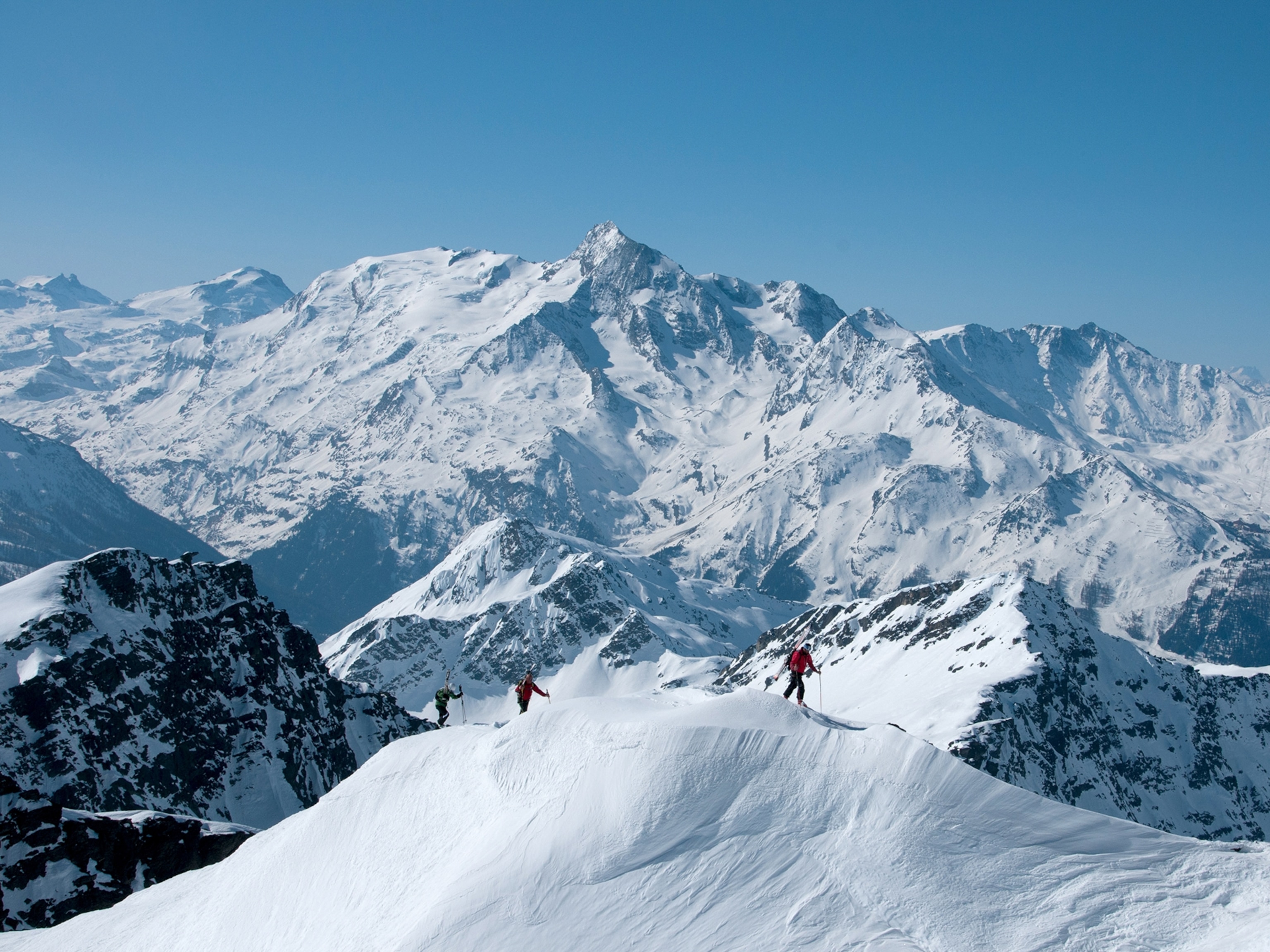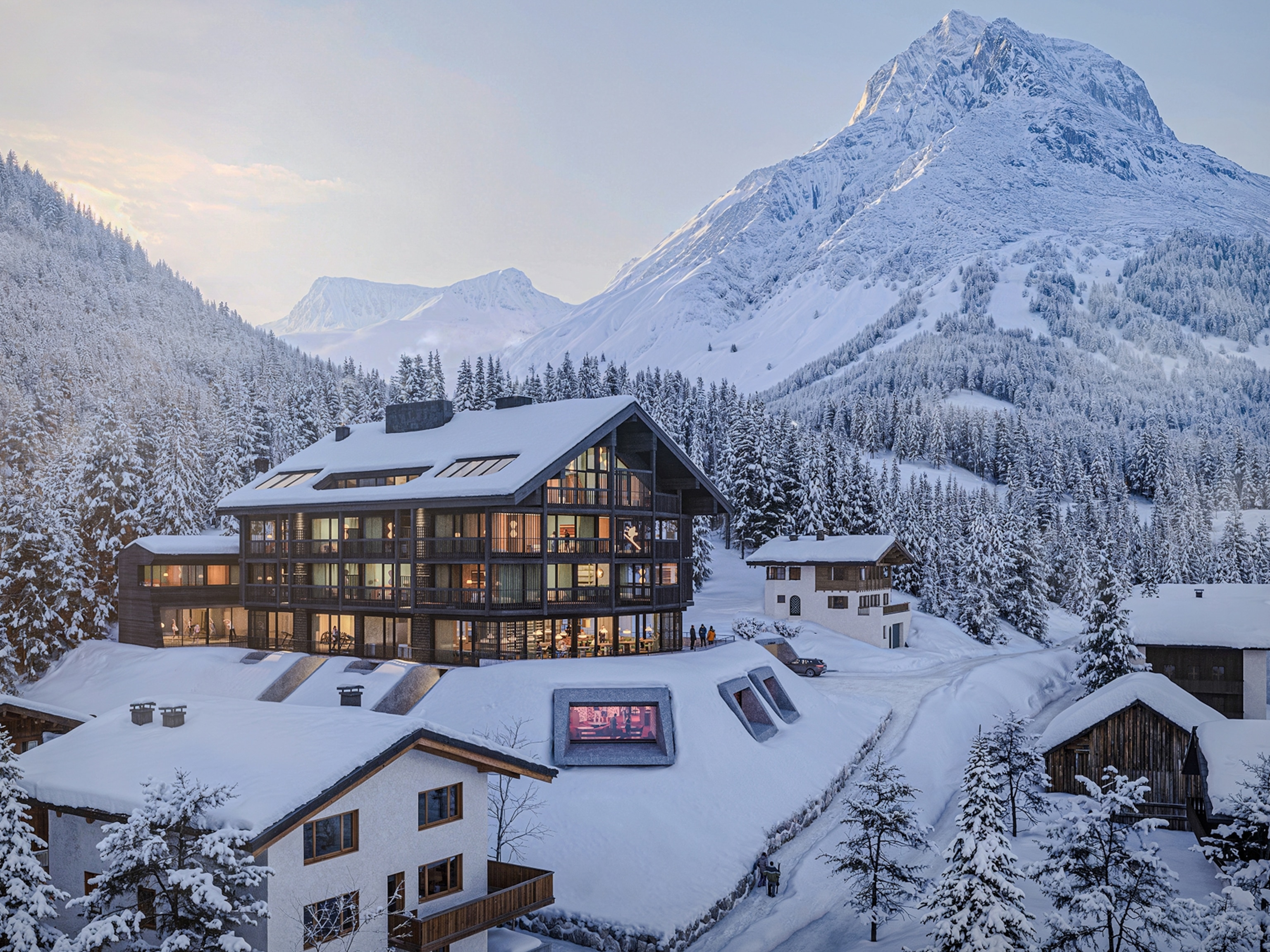Strap on snowshoes for stellar views of this Colorado national park
The low-impact alternative to skiing is one of the best ways to take in Rocky Mountain National Park’s wintry wonders, while avoiding overcrowded trails.
Just under two hours from Denver, Colorado, Rocky Mountain National Park’s unrivaled stretch of craggy, snow-capped peaks and 355 miles of hiking trails attracts nearly 3.3 million visitors annually.
Yet it’s in winter when the park becomes a playground for outdoor enthusiasts. That’s when summer crowds have long faded and a quilt of snow blankets the landscape. One of the best ways to explore the quiet beauty of the season is by snowshoe.
With its low cost and maintenance (compared to other snow sports) the wide-surface device offers an environmentally sustainable way to hike national parks in winter. If done responsibly, snowshoeing can also relieve sensitive areas suffering from overuse and trail erosion, like at Rocky Mountain National Park, which has experienced a 44 percent increase in visitation since 2012.
The ease of use makes snowshoeing a quick snow sport to learn—one reason it’s become so popular. Market research firm Snow Sports Insights noted that snowshoeing participation grew by 12 percent in 2020. Here’s what you need to know about snowshoeing the flat meadows and powder-packed steep slopes of one of Colorado’s biggest parks.
Snowshoe evolution
The earliest snowshoes (made entirely of wood) are believed to have been created by the first people who crossed the Bering land bridge from Asia into North America around 4,000 B.C. They were further developed to the designs we see today by the Athabascans of West Coast Canada and the Algonquins of the Great Lakes area.
Kathy Brazelton, a park ranger who leads guided snowshoe tours in Rocky Mountain, says by observing the shape and pattern of animal tracks during winter, it’s easy to see what inspired the survival tool.
“What I love about snowshoes is you can get deeper in the forest and maneuver where skis would just be a pain in the neck,” Brazelton says.
(Discover the origins of these Winter Olympics events.)
Now constructed of lightweight materials like aluminum and plastic and with toothy traction bars and cleats for better grip on snow, snowshoes have enticed more outdoor recreationists to experience Rocky off trail, a concept Jared Gricoskie, owner of Yellow Wood Guiding, encourages. He explains that walking off trail in summer might compact the soil, which could take decades to recover. In winter, people are walking over a melting overlayer, leaving the earth beneath relatively untouched.
Kaiyote Snow, a naturalist, snowshoe tour operator, and Leave No Trace master educator, says it’s important to remain in areas where you can see plenty of snow and avoid areas where plants are starting to peek out.
“Some people are very unfamiliar with nature and how the whole ecosystem and habitat work,” she says. “It’s really exciting that they're here to learn about that with me on the tours.”
Alpine adventures
First-timers strapping into snowshoes, take comfort in the common phrase: “If you can walk, you can snowshoe.” On her two-hour ranger-guided snowshoe tours of Rocky Mountain’s east side, Brazelton teaches novices how to use support poles, how to stamp or edge (dispersing the force of each step to stay afloat), kick step (kicking footholds into the snow), and zig-zag back-and-forth to go uphill on steep climbs.
The one-mile trek to Nymph Lake is one of Brazelton’s favorite guided tours, which she likens to landscape seen in the children’s book series The Chronicles of Narnia. “The deep, deep forest with sugar-dusted trees is all around us,” she says. “You expect these magical animals to come out of the forest.”
(These are the best cross-country ski trails in the U.S.)
Nicholas Scritchfield, owner and lead guide of Rewilding Expeditions, says that if you hiked the same trail in summer, you could easily be surrounded by 50 or more people, whereas, in winter, you might have 10 people sharing the same trailhead. “I like to offer people solitude,” he says. “So many [people] don’t realize how loud silence can be when out snowshoeing in the park.”
For more intrepid travelers, Scritchfield leads adventurers on off-trail camping trips in the park’s more remote wilderness. Prior winter camping experience is recommended as the excursions wind through and up steep sections of the park near the Alpine Visitor’s Center, located off the 48-mile Trail Ridge Road—the longest continuous paved road in the United States.
The trek takes travelers over frozen lakes, through dense alpine forests, and up winding slopes. “Whether you go on an easy journey or make it more adventurous, the park will reward you with some of the best views and best moments you’ve had in Rocky,” he says.
For active outdoor types who like to add in more heart-pumping activity, Gricoskie weaves in elements like jogging downhill on fluffy snow. “It’s fun, but it’s not skiing,” he says. “You are not racing down the hill like an Olympian.”
He adds if people fall while snowshoeing the snow provides a cushy landing, making it easier to laugh it off and try again.





